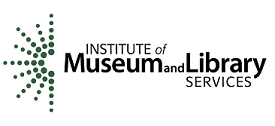Ideation on a Community Wish for a Walmart
 It is helpful to see an example of an ideation activity conducted by one of the Round 1 Smart Spaces libraries. The Madison Public Library in Madison, South Dakota (population 12,600), had posed two questions to their community: “What do you like most about your community?” and “What do you think would make it better?” They collected over 150 responses from seven different locations around town. The response that surfaced most frequently about what would make Madison better was “a Walmart.” Initially, the library staff wanted to discard that input because clearly the library was not going to build a Walmart for the town.
It is helpful to see an example of an ideation activity conducted by one of the Round 1 Smart Spaces libraries. The Madison Public Library in Madison, South Dakota (population 12,600), had posed two questions to their community: “What do you like most about your community?” and “What do you think would make it better?” They collected over 150 responses from seven different locations around town. The response that surfaced most frequently about what would make Madison better was “a Walmart.” Initially, the library staff wanted to discard that input because clearly the library was not going to build a Walmart for the town.
The ideation process seeks to think beyond the obvious conclusion, to dissect the idea. What could they find if they dug deeper into what the community thinks it’s missing by not having a Walmart? What are the emotions behind that desire? And what activities related to shopping might the library be able to put into action?
The Smart Spaces cohort worked together to put Madison’s Walmart wish on the ideation operating table. As they analyzed the anatomy of what the community might want, they came up with the following ideas:
- People look to Walmart as a source of variety, convenience, low prices, one-stop availability, and more choices. The library might:
- Offer classes on how to shop online effectively and safely.
- Offer classes and information more generally on how to be safe and savvy on the internet.
- Start coupon exchange clubs and focus on swapping instead of shopping.
- Walmart is a place where people can find something new and get instant shopping gratification. The library might:
- Illuminate the darker side of Walmart coming to town, such as the impact on local business and wages; convene a discussion group to watch a presentation, such as What Happens to Small Businesses When Walmart Moves In? (Mitchell 2012), and talk about it in context of their own community.
- Start a community conversation about other alternatives for retail therapy.
- Encourage entrepreneurship and support people to start their own businesses.
- Support local making with “how to make” (craft) workshops.
- Provide pop-up locations for local vendors inside or outside the library.
- Start or support a farmer’s market that would include crafts as well as food.
- There are social aspects to mall shopping—it’s entertainment and people-watching; it provides opportunities for teens in particular to explore their independence and make choices.
- Take a cue from Walmart and have library staff as designated “greeters” to make everyone feel welcome and acknowledged when they enter the library.
- Foster social connections among community members through book clubs or craft clubs and other events.
- Start a local walking group to explore different sectors of the community and satisfy the people-watching urges.
- Empower teens in other ways to build independence and make decisions for themselves.
When an idea is expanded to look at creating opportunities for people to make their lives and their community better, it shines a light on the many ways the library can meet their aspirations. The Madison Public Library story reveals how library staff picked up on the aspect of empowering teens. Not only did they transform a physical space to be dedicated to teen activities, they transformed their relationship with teens in the community and fostered a very independent, creative, and engaged group.
This resource is also available to download as a Word Document.
Photo: Madison (SD) Public Library Wish Tree; used with permission
The Smart Libraries Create Smart Spaces project was made possible by support from OCLC and a National Leadership Grant (project number LG-80-16-0039-16) from the Institute of Museum and Library Services. The Association for Rural and Small Libraries was implementation partner for the project.


Toolkit for Creating Smart Spaces
WebJunction offers a toolkit to help you re-envision your library’s place as a center of community learning. Explore more of the Toolkit for Creating Smart Spaces.
